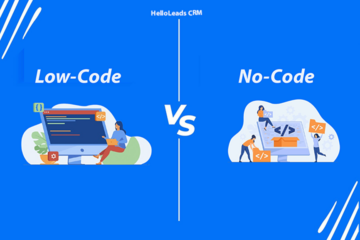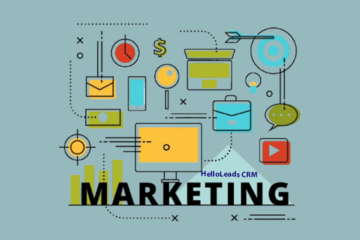
Have you come across the term ‘hashtags?’ Do you know how to get people to read your blogs or share your social media posts? Or how can you make them work for your small business?
Sit back and read on. This blog will explain how to implement hashtags effectively and also the importance of using them.
What is Hashtag?
A hashtag is a kind of content label, denoted by a hash or pound (#) symbol followed by a word or phrase. Eg: #SalesCRM. It was originally intended to be used to denote numbers. Later, in the summer of 2007, Chris Messina was the one who used hashtags. That’s when the marketing expert stepped into Twitter’s office with the notion of grouping relevant Tweets together using the pound symbol. They are no longer only for Twitter; hashtags work well on other social media sites too. It guides those who are interested in a particular topic to easily find content on that subject.
Why do we need hashtags?
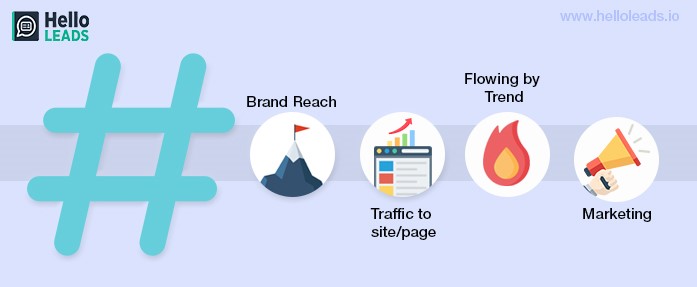
While hashtags may appear to be worthless to a newbie, they are a tremendous tool for marketing your brand, promoting your blog or posts. This is because they can help you extend your network, promote your brand, and get your content in front of the right people. You can create one for your brand and post it on social media. This can result in more engagement, more likes, shares, and new customers for your brand on social media.
On the other hand, rather than creating a hashtag on your own, you could simply join the conversation on a topic that already has one by including the hashtag in your post (usually at the end). Thereby, you’re sharing your view related to that content.
Note: It’s better to avoid “hashtag pollution,” i.e. when you use more hashtags in one message, it would be difficult to read. Use the necessary and appropriate hashtags for your content.
5 things you need to know about using hashtags :
(1) Basics of hashtags :
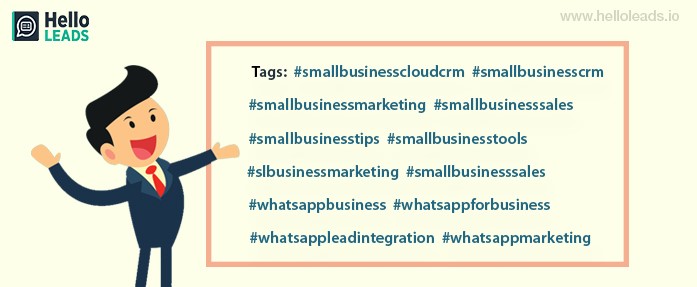
Hashtags should always begin with the # symbol and underscore can be used to split the words, but if you use spaces, punctuation, or any other symbols, they will not work.
Eg: The right way to use the hashtag – #HelloLeads ,#HelloLeadsCRM
(2) Must be a public account :
Ensure that your profile is public, i.e., not private, but a public account on any social media platform. Otherwise, people not following your account will not see the content you post on social media platforms with hashtags.
(3) Avoid hashtag pollution :
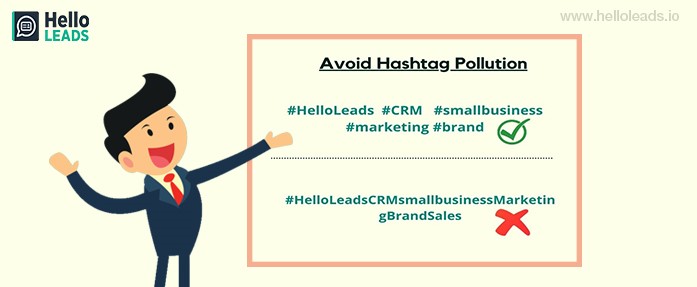
The best hashtag should have a single word, or maybe a couple. Do not string more words in a row; avoid using lengthy words and sentences. More isn’t always better, and it may look clumsy. Use a limited number of hashtags. Remember that the simpler something is, the easier it is to comprehend. The topmost hashtags are usually brief and simple to read and remember.
(4) Use relevant hashtags :
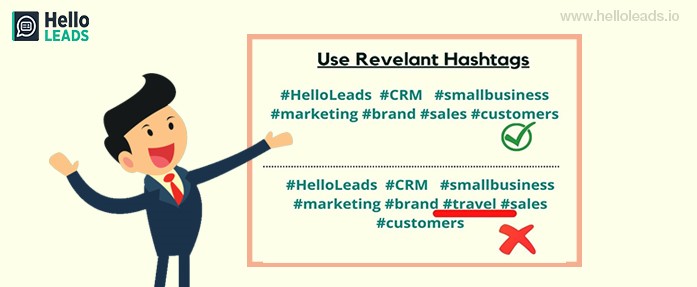
The main reason for adding hashtags is to increase the size of your audience and customers. As a result, if your hashtag isn’t conveying information about your brand or relevant content, you have already lost the race.
Just because a particular hashtag is trending doesn’t mean that it will be beneficial to you. A popular hashtag may or may not be appropriate for your brand. Use hashtags that are relevant and specific to your brand or the content you post. It will be difficult to find if it is too unusual and irrelevant, and it will be unlikely to be utilized by other social media users.
Eg: You cannot add hashtags related to travel in technology content.
(5) Know which hashtag is on-trend :
If any of the trending hashtags has similar context to your brand or content, guess what? you are super lucky to flow with the trend. Since it is already trending at the moment, you can pepper your content with references to the trend and use relevant hashtags in your posts. This will bring more people to your post, which may increase your brand’s popularity and drive more traffic to your website or page.
Concluding on that note, hashtags play a vital role in social media and marketing your brand. These are the five essential things you should know before using hashtags. They are an effective tool when used in the right way, and may help you expand your market reach and improve your brand.
Share this blog :